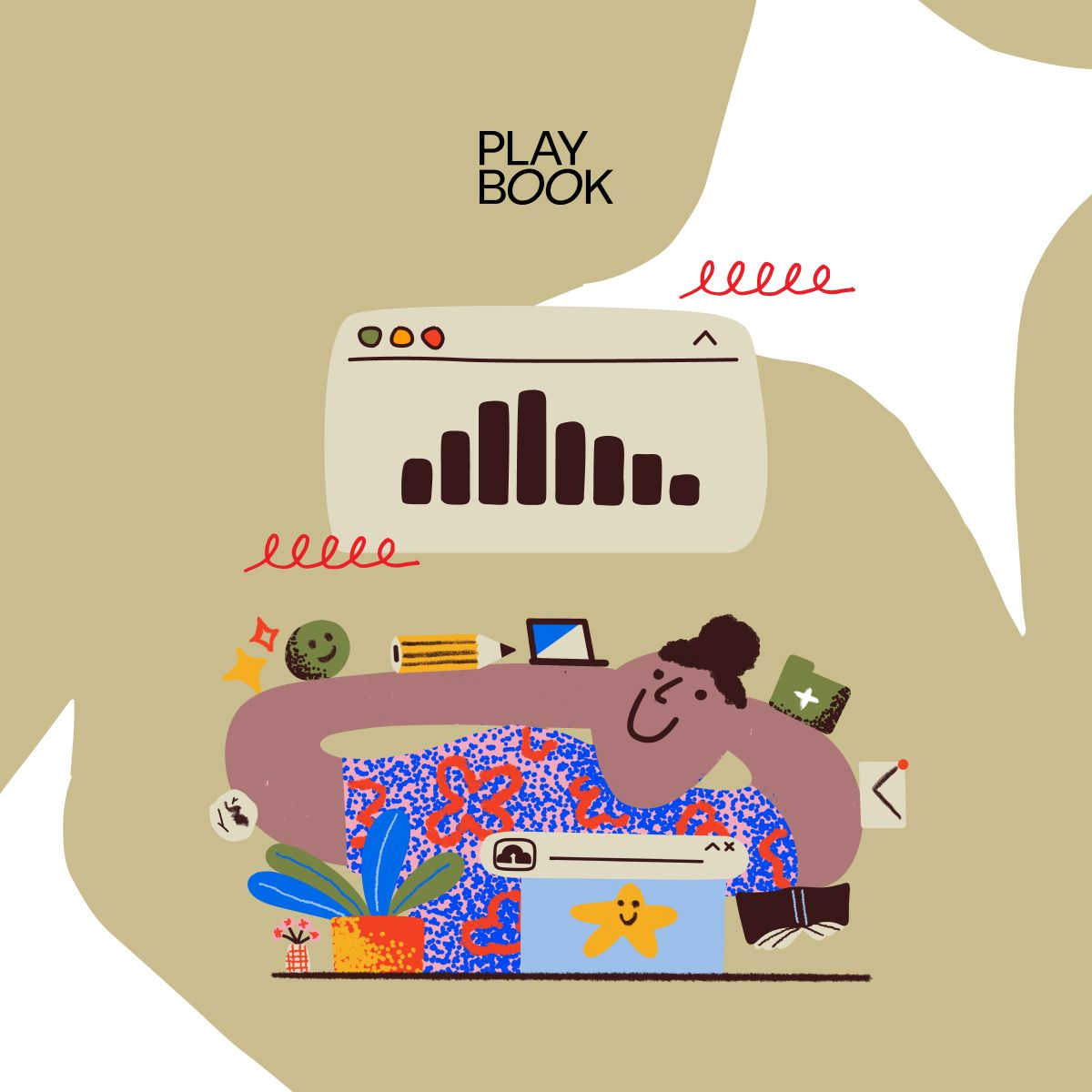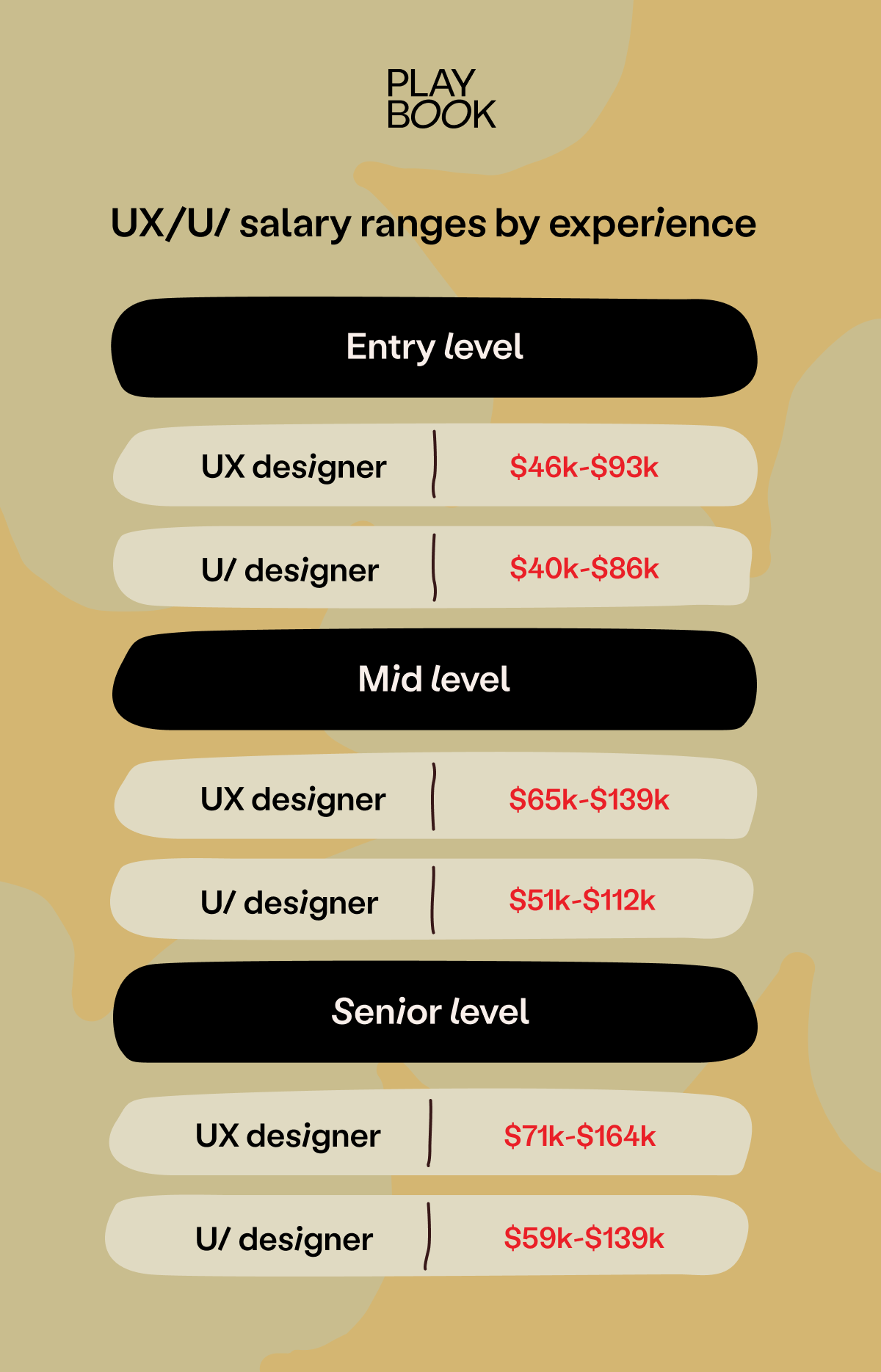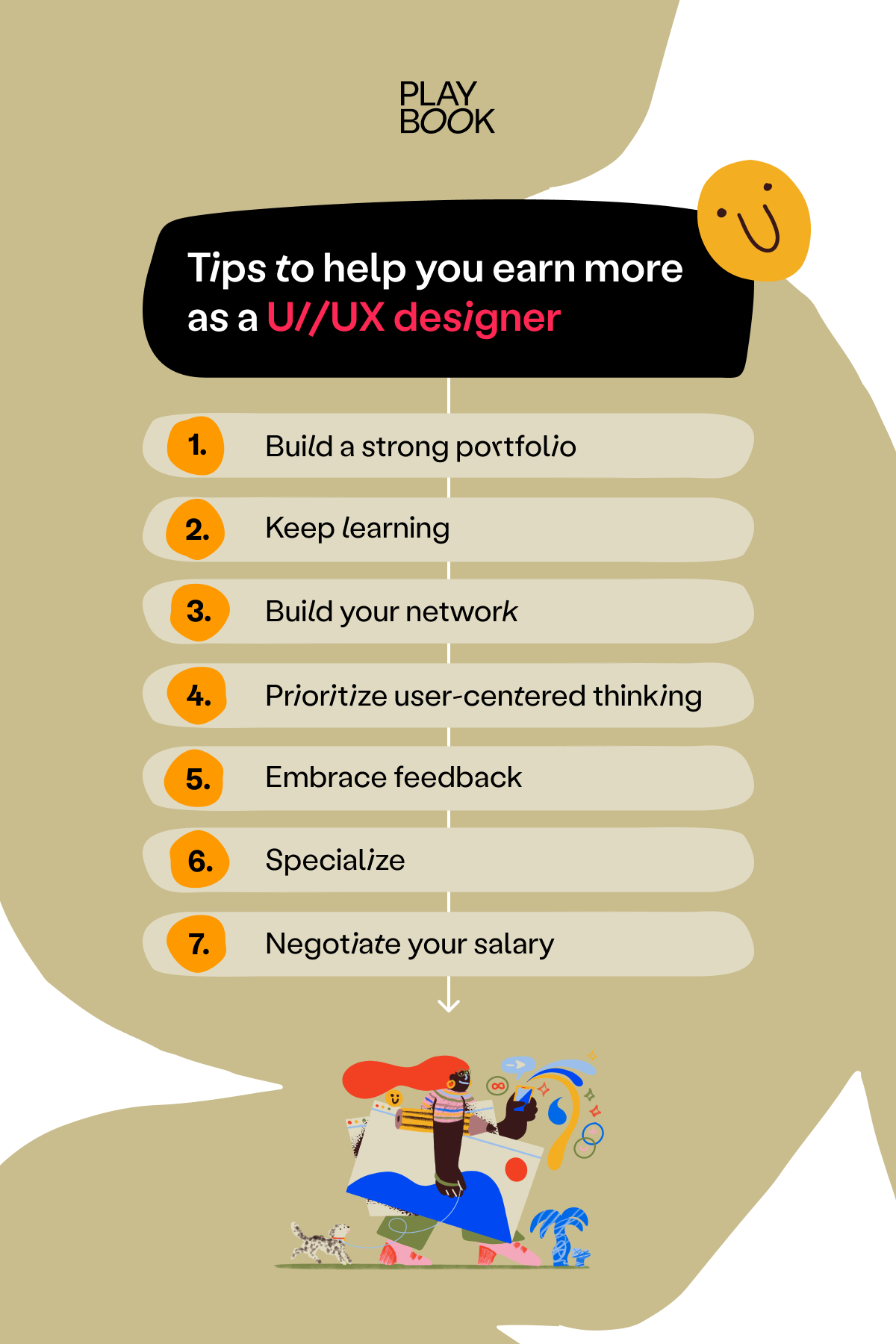
There’s a reason why companies — including big companies like Apple and Netflix — are investing more in skilled designers to create positive user experiences.
Statistics and research show that thoughtfully designed user interfaces and user experiences can significantly impact customer satisfaction, retention rates, and even revenue. Consider this. A good user interface can increase conversion rate by up to 200%, and good UX can improve the rate by up to 400%.
As user-centered design becomes paramount, UI and UX designers hold a unique position as architects of great user experiences and companies are recognizing this, offering salaries to match the demand for good UI and UX designers. But how much do UI/UX designers make? What’s a good salary for this important role?
Whether you're just stepping into this exciting field or looking to level up your career, understanding UI/UX designer salaries is crucial. In this quick guide, we'll explore the current landscape of UI/UX design salaries, as well as some tips to help you secure a solid income.
UI/UX salaries by experience
According to Glassdoor, the average UI/UX designer salary is $81,693 per year. However, salaries vary based on experience. Here's a breakdown of what you can expect as you progress in your career:

Entry-level UI/UX designer
Entry-level designers with limited experience learn and contribute to design projects under the supervision of senior designers.
- UX design: You can anticipate an average annual salary of $67,701 at this stage, but the typical salary range is between $46,000 and $93,000.
- UI design: As a junior UI designer you can earn an average annual salary of $57,344, and the salary range usually falls between $40,000 and $86,000.
Mid-level UI/UX designer
With a few years of experience, you’ll take on more responsibilities and often manage projects independently.
- UX design: Mid-career designers earn around $65,000 to $139,000 per year, with an average salary of $88,721 per year. Senior UI/UX designer
- UI design: At this level, the average salary is $74,103 per year, and the typical range is between $51,000 and $112,000 per year.
Senior level designer
As an experienced designer with a proven track record, you’ll lead projects, mentor junior team members, and make crucial design decisions.
- UX design: The average annual salary rises to $99,924, with a typical salary range between $71,000 and $164,000 annually.
- UI design: The average annual salary for UI designers is $88,492. The typical annual salary range is $59,000 to $139,000.
Apart from experience, several factors influence UI/UX salaries:
- Geographical location: Salaries are heavily influenced by the cost of living in a particular area. For example, designers who live in high-cost areas, such as San Francisco and New York, tend to get higher compensation than those who live in lower-cost areas to offset the higher expenses associated with living in expensive areas.
- Remote work opportunities: With the increasing prevalence of remote work, some companies adjust salaries based on the regional cost of living. This means that a designer working remotely from a lower-cost area might receive a different salary compared to someone working in a high-cost area.
- Company size and industry: Larger companies and industries like finance and healthcare typically offer more competitive salaries. For one, larger companies have more resources, so they can afford to pay their employees more. In addition, industries such as finance and healthcare require specialized skills, therefore, companies in these industries need to offer higher salaries to attract talent.
- Specialization: Having expertise and specialized skills in niche areas like interaction design, virtual reality, or accessibility can make you a sought-after designer, allowing you to command a higher salary.
- Company culture and benefits: Some companies sweeten the deal with attractive benefits, including flexible hours, health insurance, wellness programs, and even stock options. These perks can significantly impact your overall compensation package.
7 tips to earn well as a UX/UI designer
If you're a UI/UX designer or on the path to becoming one, consider these essential tips to not only earn a living but thrive in this dynamic field:

Build a strong portfolio
Your portfolio is your visual resume, and it serves as a canvas for showcasing your skills, creativity, and problem-solving abilities. When developing a portfolio, include a variety of projects that demonstrate your range, from initial wireframes to final, polished designs.
Keep on learning
The UI/UX space is dynamic, continually morphing with fresh trends and tools. Stay updated with the latest design tools, emerging design principles, and industry trends to maintain your competitive edge.
Network and connect
Collaboration and inspiration are the lifeblood of UI/UX design. Engage in design gatherings, conferences, and virtual communities to establish meaningful connections with fellow designers. These interactions will not only enrich your knowledge, but they can help you discover job opportunities.
Prioritize user-centered thinking
Successful design hinges on a deep understanding of users — their needs, behaviors, and pain points. Cultivating a deep sense of empathy will enable you to craft solutions that genuinely resonate with your target audience.
Embrace feedback
Rather than shy away from feedback, embrace it as a catalyst for growth. Constructive feedback serves as a robust tool to refine your designs and evolve as a designer, so seek out perspectives from peers, mentors, and end-users to continuously improve your craft.
Specialize in sought-after design skills
Becoming a specialist designer will improve your chances of earning more. Some of the top in-demand UI/UX design skills include user research, interaction design, prototyping, accessibility design, and data-driven design.
Negotiate your salary
Salary negotiations are a great way to increase your earnings. That said, it’s important to keep some things in mind when broaching this subject:
- Gather data on industry standards and salary ranges for your specific experience level, location, and specialization.
- Emphasize how your skills, experience, and unique perspective will benefit the company's projects and goals during negotiations.
- Look beyond the base salary and consider other aspects of your compensation package, such as bonuses, benefits, remote work options, and opportunities for professional growth.
Approach negotiations with a positive and professional attitude, and be prepared to discuss compensation openly, focusing on the mutual benefits of reaching a fair agreement. However, if an offer doesn't align with your expectations and the market value, it's okay to gracefully decline and seek better opportunities.
Level up your UI/UX career
The UI and UX design fields are an exciting and evolving landscape with immense potential. Demand for talented designers is on the rise, making it the perfect time to hone your skills and embark on a rewarding career journey.
By building a robust portfolio, staying curious, connecting with the community, and mastering in-demand skills, you'll be well-equipped to create impactful designs and command competitive salaries in this dynamic industry.
Ready to level up?

